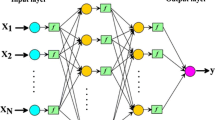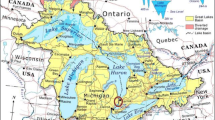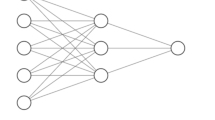Abstract
This paper discusses the accuracy performance of training, validation and prediction of monthly water quality parameters utilizing Adaptive Neuro-Fuzzy Inference System (ANFIS). This model was used to analyse the historical data that were generated through continuous monitoring stations of water quality parameters (i.e. the dependent variable) of Johor River in order to imitate their secondary attribute (i.e. the independent variable). Nevertheless, the data arising from the monitoring stations and experiment might be polluted by noise signals owing to systematic and random errors. This noisy data often made the predicted task relatively difficult. Thus, in order to compensate for this augmented noise, the primary objective of this study was to develop a technique that could enhance the accuracy of water quality prediction (WQP). Therefore, this study proposed an augmented wavelet de-noising technique with Neuro-Fuzzy Inference System (WDT-ANFIS) based on the data fusion module for WQP. The efficiency of the modules was examined to predict critical parameters that were affected by the urbanization surrounding the river. The parameters were investigated in terms of the following: the electrical conductivity (COND), the total dissolved solids (TDSs) and turbidity (TURB). The results showed that the optimum level of accuracy was achieved by making the length of cross-validation equal one-fifth of the data records. Moreover, the WDT-ANFIS module outperformed the ANFIS module with significant improvement in predicting accuracy. This result indicated that the proposed approach was basically an attractive alternative, offering a relatively fast algorithm with good theoretical properties to de-noise and predict the water quality parameters. This new technique would be valuable to assist decision-makers in reporting the status of water quality, as well as investigating spatial and temporal changes.









Similar content being viewed by others
References
Baird JI, Whitelaw K (1992) Water quality aspects of estuary modeling. In: Falconer RA (ed) Water quality modeling, pp 119–126
Chau KW, Jin HS (1998) Eutrophication model for a coastal bay in Hong Kong. J Environ Eng ASCE 124(7):628–638
Muttil N, Chau KW (2006) Neural network and genetic programming for modelling coastal algal blooms. Int J Environ Pollut 28(3/4):223–238
Makarynskyy O (2004) Improving wave predictions with artificial neural networks. Ocean Eng 31:709–724
Grubert JP (2003) Acid deposition in the eastern United States and neural network predictions for the future. J Environ Sci Eng 2(2):99–109
Mu GB (1996) Application of filter theory to system identification and state estimation of river water quality dynamics. Adv Environ Sci China 4(4):34–45
Bell WR, Martin DEK (2004) Computation of asymmetric signal extraction filters and means squared error for ARIMA component models. J Time Ser Anal 25(4):603–648
Avci E (2007) An expert system based on wavelet neural network adaptive norm entropy for scale invariant texture classification. Expert Syst Appl 32(3):919–926
Tirtom H, Engin M, Engin EZ (2008) Enhancement of timefrequency properties of ECG for detecting micropotentials by wavelet transform based method. Expert Syst Appl 34(1):746–753
Dohan K, Whitfield PH (1997) Identification and characterization of water quality transients using wavelet analysis. I. Wavelet analysis methodology. Water Sci Technol 36(5):325–335
El-Shafie A, Taha MR, Noureldin A (2007) A neuro-fuzzy model for inflow forecasting of the Nile River at Aswan high dam. Water Resour Manag 21:533–556. doi:10.1007/s11269-006-9027-1
Jang JS, Sun CT, Mizutani E (1997) Neuro-fuzzy and soft computing. Prentice-Hall Inc, ISBN 0-13-2874679
Jang J-SR (1993) ANFIS: adaptive-network-based fuzzy inference systems. IEEE Trans Systems Man Cybernet 23(3):665–685
Sugeno M, Kang GT (1988) Structure identification of fuzzy model. Fuzzy Sets Syst 28:15–33
Chang F-J, Chang Y-T (2006) Adaptive neuro-fuzzy inference system for prediction of water level in reservoir. Adv Water Resour 29(1):1–10
Burrus CS, Gopinath RA, Guo H (1998) Introduction to wavelets and wavelet transforms- aprimer. Prentice Hall, NJ
Abd-Elhamid W, Osman A, Noureldin A, El-Sheimy N (2005) Wavelet multi-resolution analysis for enhancing the performance of integrated GPS and MEMS-based navigation systems. Geomatica V59(1):61–72
Misiti M, Misiti Y, Oppenheim G, Poggi J-M (1996) Wavelet toolbox: For Use with MATLAB, the Math Works Inc
Dawson CW, Wilby R (1998) An artificial neural network approach to rainfall-runoff modelling. J Hydrol Sci 43(1):47–66
Najah A, Elshafie A, Karim OA, Jaffar O (2009) Prediction of Johor River water quality parameters using artificial neural networks. Eur J Scienti Res 28(3):422–435 ISSN 1450-216X
Acknowledgments
The authors wish to thank the Department of Environment for providing the required data for this research. Also, the authors wish to thank the reviewers for their comments, which have significantly improved the original manuscript. This research was supported by the research grant given to the second and third authors from University Kebangsaan Malaysia; UKM-GUP-PLW-08-13-308 and FRGS Fund UKM-KK-02-FRGS0125-2009.
Author information
Authors and Affiliations
Corresponding author
Rights and permissions
About this article
Cite this article
Najah, A.A., El-Shafie, A., Karim, O.A. et al. Water quality prediction model utilizing integrated wavelet-ANFIS model with cross-validation. Neural Comput & Applic 21, 833–841 (2012). https://doi.org/10.1007/s00521-010-0486-1
Received:
Accepted:
Published:
Issue Date:
DOI: https://doi.org/10.1007/s00521-010-0486-1




